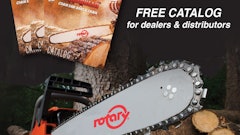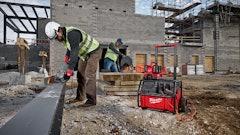If you’re one of the many lawn maintenance or landscape contractors who has yet to develop a company website, or maybe has a site that’s not really helping you strengthen your image and/or grow your business, now is the time to revisit some of the basic principles of what a good website should accomplish.
First Impressions
Your home page should focus on one thing: capturing the attention of your prospects while letting them know you have the solution they’re looking for.
That means having a very prominent, attention-capturing headline or callout that quickly conveys how a customer will benefit from the services you provide. For example, check out thorntonlandscape.com and their use of the phrase, “Get the neighbors talking.”
You might also consider incorporating some kind of offer that motivates customers to take action and contact you. A couple examples would be:
- A free lawn analysis and action plan that tells people what they can do to revitalize a tired lawn
- A free design consultation where you’d walk the property with a prospect and offer specific suggestions
- A free guide to help consumers understand how to select a quality landscape contractor
- A sign-up for a periodic email newsletter
While you want your home page to be attention-grabbing, you also want to keep it simple. Many small businesses make the mistake of trying to get too fancy, which often makes things overly complicated for visitors, who end up leaving the site before learning anything about the company. Animations, videos, background music, and things of that nature certainly are impressive, but often won’t help you land any additional leads.
What will help you land more leads is a website that conveys a highly professional image, has a consistent look and feel, is easy to navigate and draws visitors in.
Definitely provide an overview of your services on the home page. More contractors are listing each of their services individually in the main navigation bar. (Visit inoutservices.com for an example.)
In addition to your services, it’s also important to include a “contact us” tab in the main nav bar. Other effective and often-used items include an “about us” tab, a “photo gallery” tab and a “customer testimonials” tab.
Build Confidence
Placing these key components in your main nav bar allows you to keep your home page clean and simple, providing visitors with a quick overview of your company while enticing them to learn more. Then, by clicking on these important tabs you’ve set in the nav bar, prospects can discover even more about your company.
For instance, by clicking on your services tabs, visitors can learn how each of the services you provide can benefit them. Including photos with each service description is helpful. (Visit ndlandscape.com for an example.)
By clicking on the “about us” tab, visitors can get more of the story behind your company and its employees. Include important milestones and achievements, such as industry affiliations, certifications, awards, etc. If you’re a celebrity who’s been featured in local or national media, be sure to mention that—it all adds to your credibility. (Visit 2009 Pros in Excellence Award Winner landscapeamericainc.com for an example.)
Your “photo gallery” tab can wind up having a big impact on prospects, especially if you incorporate a lot of before-and-after photos. And you don’t have to be a landscape installer. If you’re a maintenance-only contractor, take a picture of a property when your crew shows up, then a shot of how the property looks when the crew leaves; beautifully striped and cleanly edged, etc.
Before-and-after photos can work the same way for lawn care contractors. Additionally, showing photos of different types of turf stress and disease, along with descriptions of what they are, how they’re caused and how your services can help, can work wonders.
And when it comes to just words, nothing compares to a strong customer testimonial, which is why you should have a “customer testimonials” tab in your nav bar. Be careful though, because it can’t just be a generic, watered-down, “Boy they were great!” endorsement. Powerful testimonials are very specific, providing details of the situation before, during and after.
Include as many powerful testimonials as possible. If a site visitor doesn’t want to take the time to read them all, that’s fine. But the more there are the more impressive you look—so load them up. When possible, it’s also helpful to include photos, names and cities. Every contractor should have a testimonials collection system built into his business, so hopefully you have plenty already on file.
Lock in that Lead
Likewise, every contractor’s website should have a mechanism for capturing a visitor’s contact information. Some contractors simply have their “contact us” tab lead to a page with address, phone, email, etc. Others have the tab open a new email message.
Many contractors have chosen to have their webmaster create a form that at least captures a name and email address. If the customer is asking for some type of analysis or maybe even an estimate, try to capture a mailing address and phone number, too. Some “contact us” forms ask for all sorts of other information, such as “where did you hear about us?” or “how much money are you looking to spend?”
When building up a customer database, answers to questions like those can be very valuable. But you have to be careful not to scare the customer away, or ask them to fill out so much information that they just say “to heck with it.” Think about what your objective is and ask the bare minimum required to complete the objective.
When you get down to it, the objective is to gain a new sales lead. That’s why you must have a system in place for following up while a lead is hot. In most cases, an automated response is acceptable. If the customer has filled out the form and asked for an estimate, you should follow up that automated response with a personal email or phone call.
The landscaping business is still a personal business—one where retention and referrals is the primary engine for sales growth. These days, a professional, user-friendly website is playing an increasingly important role in revving things up.






























